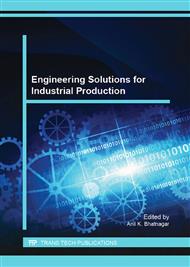p.19
p.23
p.28
p.34
p.39
p.44
p.50
p.54
p.59
Development for a Hot-Water Heating System Using Biogas Energy in the Pig Farm
Abstract:
A water heating system which utilized biogas energy as a heat source in farrowing house of pig farm was developed in this study. The hot water which was heated by the biogas-burners flowed through the delivery pipeline to heat the metal panel made of aluminum alloy in the piglet’s incubator. The ambient air temperature in the piglets incubator could be raised by way of the thermal radiation of the aluminum panel and then kept the piglets warm. The simulation tests of the hot-water heating system was aimed to find out the reference conditions of the field tests by measuring the temperature of the hot water under different flow rate of the hot water and investigating the air temperature change rate in piglets incubator. The results of simulation tests showed that the ambient air temperature of the piglets incubator can achieve above 28 °C within 30 minutes in the conditions of 90 °C hot water and 45.3 L/min water flow rate. The influence of flow rate to the ambient air temperature in the piglet’s incubator was not significant. The results of the field tests obtained that the heating panel surface temperature increased significantly with the rising hot water temperature. Under the condition of 85 °C hot water and 45.3 L/min flow rate, the raised air temperature was 5.2 °C within 25 minutes in the piglets incubator where 13-day-age eight piglets stayed. This hot-water heating system can switch by hand to the electric-auxiliary heating device when there is no enough biogas to use. The hot-water heating system can achieve the purpose of saving electric energy and reducing the emissions of the greenhouse gas. It is feasible to operate and adjust the suitable temperature for the growth environment of piglets.
Info:
Periodical:
Pages:
39-43
Citation:
Online since:
July 2015
Authors:
Keywords:
Price:
Сopyright:
© 2015 Trans Tech Publications Ltd. All Rights Reserved
Share:
Citation:


